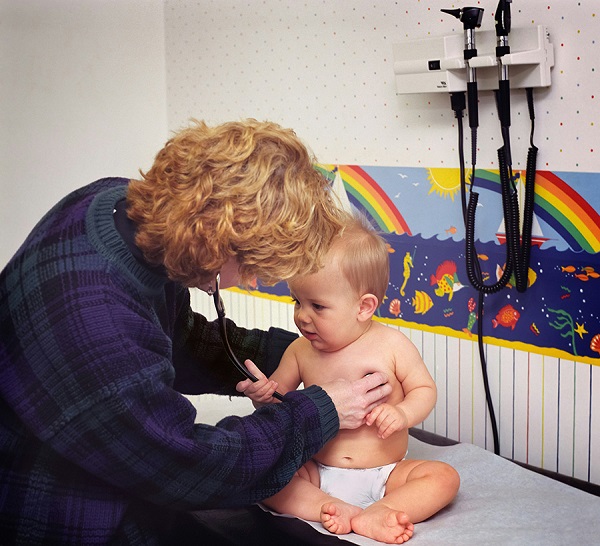As with any illness, tell the child’s family if you are concerned about their health. Contact 911 or your local emergency system if you think a child may be having a medical emergency.
Pertussis is a serious, contagious respiratory infection caused by bacteria. Pertussis is also known as whooping cough. It gets its name from the whooping sound made when a person with pertussis tries to take a breath after a coughing spasm.
While the symptoms may begin like a common cold, the coughing can last for weeks or months. Older children and adults who do not know they have pertussis may transmit the disease to infants and young children. A health care provider can tell you if a person has pertussis.
It is very important for babies as young as 2 months old to start the vaccine series that builds protection against pertussis. It is equally important for older children and adults to stay up to date with their immunizations.
Pertussis is a notifiable disease.
If a staff member or child is diagnosed with pertussis or has been around someone who is infected, contact and follow guidance from the public health department in your jurisdiction. Your local health authorities can help you notify parents and guardians about potential or confirmed exposures of their child to an infectious disease.
What are the symptoms of pertussis?
Early symptoms are like the common cold:
- Runny or stuffy nose
- Fever
- Mild cough
More severe symptoms may appear later. These include:
- Sudden and forceful coughing spasms
- A whooping sound when trying to breathe after coughing
- Vomiting after coughing
- Difficulty breathing
- A cough that lasts for weeks or months
Infants may not cough as much but can stop breathing without warning.
How does pertussis spread?
Pertussis is very contagious. An infected person can spread it when they breathe, cough, or sneeze. It can spread as soon as someone begins experiencing symptoms, and it remains contagious for a long time. People are more likely to be infected when they spend a lot of time with someone who is infected.
 Who is at greatest risk?
Who is at greatest risk?
Pertussis can be dangerous for people of all ages. Infants under 1 year old are most at risk and often have more severe symptoms. The younger the infant is, the more likely they will need to be hospitalized. Complications are less serious in older people and children, especially if they are immunized.
Many infants get pertussis from a family member or caregiver who may not even know they have it. Adolescents and adults who are not up to date on their pertussis vaccines may put infants at higher risk.
How can programs limit the spread of pertussis?
Adults and children diagnosed with pertussis should be excluded from early childhood settings until they complete five days of the recommended medication.
- Your local public health department or jurisdiction will determine who is a close contact, who will need to be treated, and how long they will need to be excluded if not treated.
- Each health care provider will determine the appropriate treatment.
- Monitor other children and staff for signs of pertussis and recommend they see a health care provider if they have symptoms.
Refer to Caring for Our Children (CFOC) Standard 7.3.7: Pertussis for more details.
As always, follow regular infection control practices to help keep everyone healthy:
- Stay up to date on vaccines:
- Keep vaccines up to date for many diseases, including pertussis. Immunization begins at 2 months of age through adulthood to prevent pertussis.
- Encourage pregnant women to talk to their medical provider about getting immunized during pregnancy. This can help protect their newborn from pertussis.
- Staff should be up to date on their Tdap vaccine, especially those working with infants. Encourage staff to talk to their health care provider.
- Minimize exposure to illness:
- Encourage children and adults to stay home when they’re sick.
- Do daily health checks when children arrive.
- Watch children for signs of illness. Contact their parent or guardian if a child is too sick to stay. Early identification and treatment with medication can help make the symptoms less severe and decrease the risk of spreading the disease to others.
- Limit germs in the environment:
- Wash hands with soap and water often throughout the day.
- Do not let children share mouthed toys, cups, or utensils.
- Regularly clean, sanitize, and disinfect surfaces and toys.
- Teach people to cover their coughs and sneezes.
- Throw away used tissues.
- Let fresh air indoors.
- Spend time outdoors.
- Follow, review, and update exclusion policies. Exclude children if they:
- Are too sick to take part in program activities
- Need more care than staff can give them without affecting the health and safety of other children
- Show any other signs or symptoms in your “stay home when sick” policy
- Use your program’s health experts, including your Health Services Advisory Committee (HSAC) or child care health consultant, to stay up to date and to develop policies and procedures to prevent the spread of illness.
How can programs partner with families?
Here are some ways programs can partner with families:
- Share information about pertussis and other common respiratory illnesses.
- Help families find and use pertussis information.
- As with any illness, encourage families to contact their child’s health care provider with questions or concerns about symptoms that get worse.
- Remind families to call 911 or their local emergency system if they think their child may be having a medical emergency.
- Encourage families to talk with their child’s health care provider about vaccines.
« Go to Infectious Disease Fact Sheets
Read more:
Resource Type: Article
National Centers: Health, Behavioral Health, and Safety
Series: Infectious Disease Fact Sheets
Last Updated: February 3, 2025
